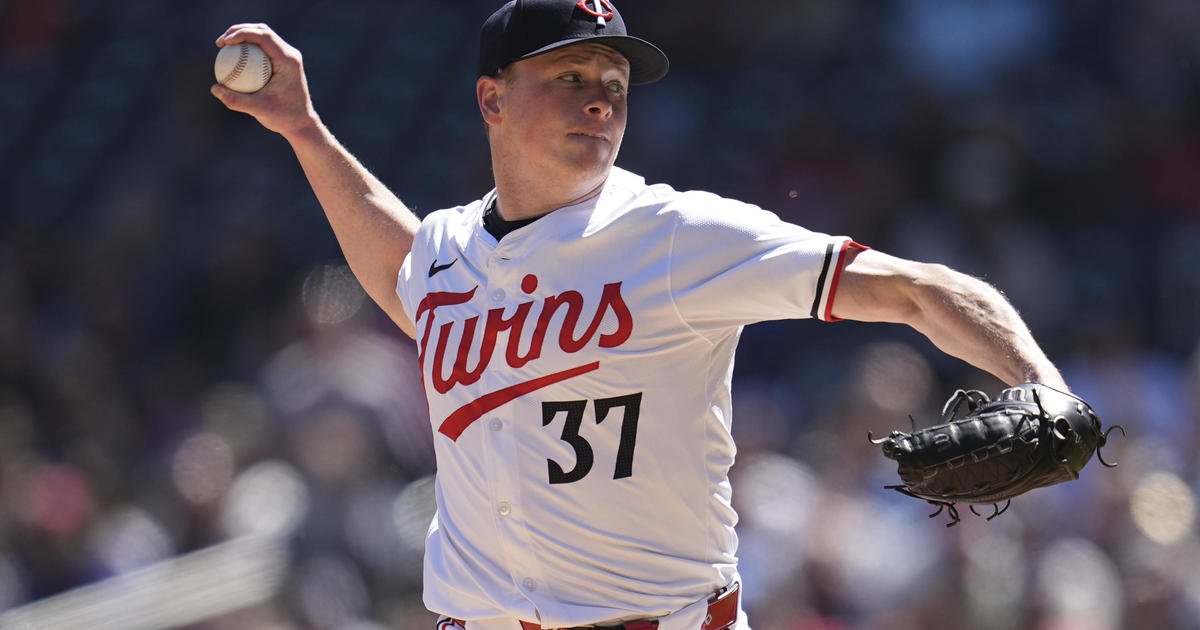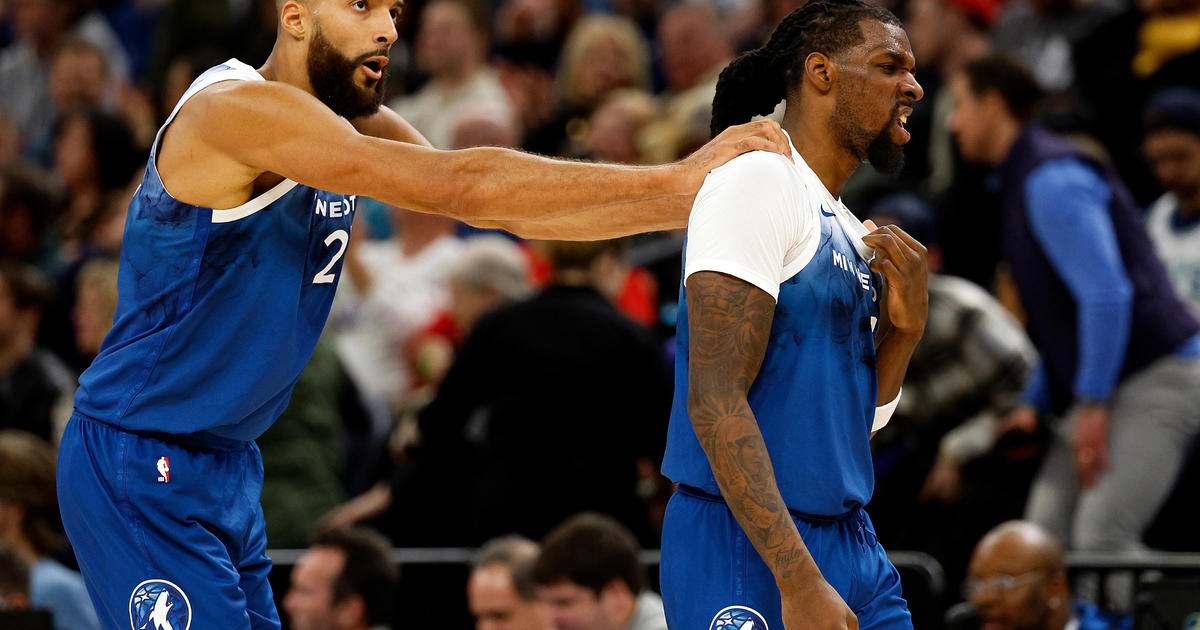Youth Baseball League Shuns Metal Bats For Wood
WEST WARWICK, R.I. (AP) -- The crack of the baseball bat is back.
For years, the Rhode Island teams in the American Legion Baseball league -- the oldest nationwide youth program -- played with aluminum bats that make the characteristic crack of America's game sound more like a dull clang.
But Rhode Island is once again playing with wood, one of at least three states nationwide where the American Legion has mandated a switch from metal bats to the type used in Major League Baseball, in part to return the game to its purer origins.
Players are now seeking their own personal Wonderboy -- the beloved bat in the 1984 classic "The Natural" that Roy Hobbs, played by Robert Redford, carves from an oak tree struck by lightning.
"There's a lot of nostalgia using all wood," said Jim Quinlan, national program coordinator for the American Legion league, which was founded in 1925 and counts the likes of Yogi Berra, Tom Brokaw and Dick Cheney as alumni. "Baseball people are hard-core traditionalists. The old-time coaches love that old wooden bat. They say it teaches the kids to be a better hitter."
Connecticut was the first to switch to all wood two seasons ago, Quinlan said, and Rhode Island followed suit this year, along with Florida. Other states, including New Hampshire and Minnesota, have discussed a change.
While the American Legion is mandating a league-wide switch to a new type of metal bat next season -- in line with the National Collegiate Athletic Association -- a switch to all wood could be in store if enough states want to go that route, according to Quinlan. The league has over 5,400 teams in all 50 states.
The debate over wood versus metal is long running. Metal bats are lighter weight and cost more -- some run several hundred dollars, while wood ones are usually $100 or less -- but they last considerably longer. They also tend to be more powerful than wood, as hitting goes. Balls pop off a metal bat, and fast.
But that has raised a safety issue, particularly after several serious injuries to high school and college players in recent years. The new type of metal bat being used in the NCAA is designed to dull the exit speed of the ball, giving players more time to react to hits that could potentially be dangerous, particularly for pitchers.
Still, proponents of metal bats say there is no conclusive research showing that wood bats, traditionally made of ash and, more recently, maple, are safer. They can splinter, sending shards of wood catapulting through the air, putting players and even fans at risk. Major League Baseball, after experiencing a high number of broken-bat incidents in 2008, began studying them -- with the help of the U.S. Forest Service -- to identify which kind of bats break most often and why. The league set new maple-bat standards and says they helped cut the shard rate.
Rhode Island's American Legion Baseball state chairman loves the return to the way the game was when he came up playing in the 1960s.
"The game plays a lot better on wood," said John Parente, who also serves as manager of the team West Warwick Post Two, which ended the regular season this month with a 13-9 record and is in the playoffs. "There's more emphasis on some of the finer aspects of the game."
By finer aspects, he means pitching and defense. With wood, the difference is obvious on the scorecard. Games tend to be closer, and fewer runs are scored, managers say. Balls that used to pop off an aluminum bat and fly out to the warning track -- or beyond -- now carry less far. Last season, Post Two had about a dozen home runs. This year, with a smaller "sweet spot" on the bat: just three.
All of them were hit by Cam Brown, a recent graduate of Moses Brown, a college preparatory school in Providence, who uses a Trinity bat made of birch and will continue playing baseball at Rollins College in Florida --with a wooden bat.
During one of the Post Two's final games of the regular season, the lean right fielder from East Greenwich, who is the team's best hitter, explained from the dugout why he likes it: "There's not many cheap hits with a wood bat."
That's also a plus for pitchers, who are posting some better ERAs.
"I'm the beneficiary, absolutely," said Chris Pogue, a pitcher on Post Two who is a proponent of the switch and a devotee of bamboo.
But some of his teammates don't like the change. They've played ball all their lives with metal and the change means less slugging. The nicest thing they can muster to say about it is that it has meant shorter games.
Parente, though, says it has also made safer games, with balls coming off the bat less quickly.
In Helena, Mont., in 2003, a then-18-year-old pitcher for an American Legion team was killed after being struck in the head by a ball that was hit with a metal bat. His parents sued the Kentucky-based Hillerich & Bradsby, best known as the manufacturer of the Louisville Slugger, which comes in both wood and metal. They said an "unreasonably dangerous" bat caused his death and that the company failed to communicate the dangers. A jury said that while the bat was not defective, the company did not adequately warn users. It awarded the family $850,000 -- a verdict the state Supreme Court recently upheld on appeal.
In 2010, the Marin County Athletic League in California banned metal bats after a then-16-year-old pitcher was hit by a line drive during a practice. He suffered a fractured skull, and was placed in a medically induced coma because of brain swelling. He eventually recovered and returned to the field.
In the early years of baseball's founding in the 19th century, players made their own wooden bats, resulting in a wide variety of shapes and sizes. Later, new bat rules were put in place, and manufacturers experimented with different types of wood. White ash was considered one of the best; hickory was found to be too heavy.
According to a history of the bat published in OldTyme Baseball News, the earliest aluminum bats had problems. Some bent upon impact, and a rubber plug at the end would sometimes pop out and need to be replaced. Easton, still a leading manufacturer of bats, popularized metal ones in the 1970s, and the NCAA legalized them in 1974.
The 2011 collegiate baseball season brought a major change, with the introduction of a new, supposedly safer version that is designed to decrease the exit speed of the ball off the bat. With the old metal bats, a lot of hits were coming off the bat at rates of over 100 miles per hour.
The American Legion follows the bat regulations of the NCAA, but individual states can vote to switch to wood.
In Florida, American Legion state chairman Les Rarrieck calls the switch by the state's 69 teams the "best thing we ever did."
A lot of teams were being lured into tournaments featuring wood bats, he said, and he didn't want to lose players or teams.
"The games seem to even be better," he said. "If you get a hit on a wood bat, it's a good hit. Plus it prepares you for the next level and in the state of Florida, we have a lot of kids drafted" for college play.
"It makes baseball what baseball should be again," he said.
(© Copyright 2011 The Associated Press. All Rights Reserved. This material may not be published, broadcast, rewritten or redistributed.)



